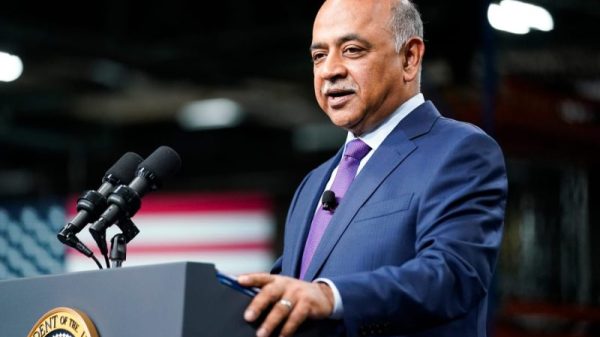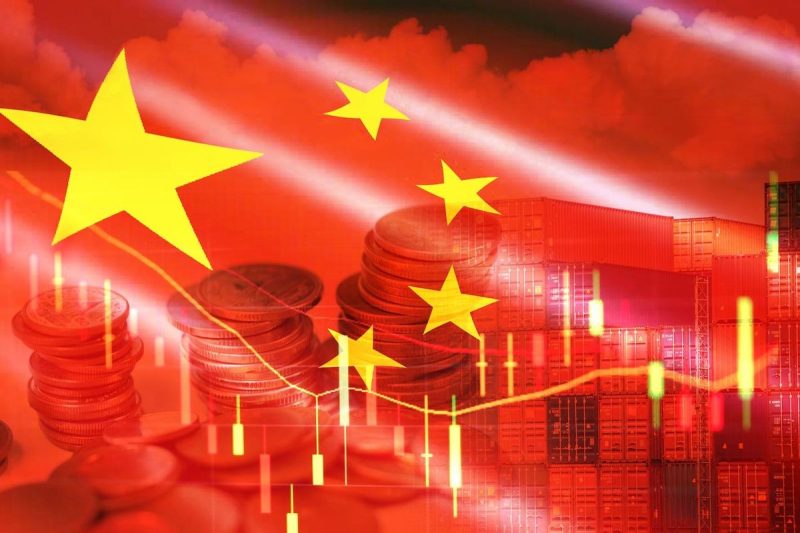In a move to address its growing financial woes, China has announced a sweeping five year, 10 trillion yuan (US$1.4 trillion) package aimed at alleviating the growing burden of local government debt.
The plan, unveiled by Finance Minister Lan Fo’an, seeks to address the substantial hidden debt that many local governments have accumulated, exacerbated by economic slowdowns and real estate market instability.
China’s dual strategy to cut hidden debt, boost fiscal health
The Chinese government’s new approach, announced on November 7, will allow regional authorities to refinance their debt through a mix of special local bonds and swaps over the next five years.
The objective is to significantly reduce the so-called “hidden debt,” a category of debt that often escapes transparent reporting and is linked to risky financing platforms backed by regional governments.
At the end of 2023, this hidden debt had reached a staggering 14.3 trillion yuan (US$1.99 trillion). By 2028, authorities hope to bring it down to a more manageable 2.3 trillion yuan (US$320 billion).
The debt relief measures involve two primary components: an expansion of local government special bonds and a debt swap program. Over the next three years, local governments will be allowed to borrow up to 6 trillion yuan (US$838 billion), with a focus on replacing the hidden debt with more transparent financial instruments.
Additionally, a 4 trillion yuan (US$558 billion) quota will be set aside to facilitate these swaps through annual bond issuance, totaling 800 billion yuan per year from 2024 to 2028.
The package, while substantial, has received mixed reactions from market analysts.
Some see the plan as a critical step toward restoring fiscal balance and improving economic stability, while others argue that it falls short of the more direct economic stimulus many had hoped for.
Mark Williams, chief Asia economist at Capital Economics, noted that while the refinancing plan will reduce interest costs and free up resources for other spending, the overall impact on China’s economic growth is likely to be minimal.
Williams told CNN that at best, the package amounts to around 0.5 percent of GDP spread over five years, pointing out that the debt relief measures alone are not enough to significantly stimulate the economy.
The move comes at a time when China is grappling with various economic challenges, including a sluggish recovery from the COVID-19 pandemic, weak consumer demand and persistent problems in the real estate sector.
Many local governments, which heavily rely on land sales for revenue, have been hit hard by the ongoing real estate slump, leading to a drastic decline in their financial capabilities. As a result, some cities are finding it difficult to provide basic public services, and the risk of defaulting on debt payments is rising.
China’s overall fiscal situation is a key concern for policymakers, with total government debt reaching approximately 85 trillion yuan (US$11.5 trillion), or 67.5 percent of GDP.
While the country still has room to take on additional debt, the growing fiscal deficit could pose risks in the long term.
China’s package won’t help copper demand
Despite the size of China’s debt relief package, copper market participants don’t see it stoking demand.
Industry leaders have argued that while this massive financial intervention could prevent defaults and improve fiscal health, it stops short of the direct economic stimulus needed to revive copper consumption.
Bloomberg quotes Ni Hongyan, vice general manager of Eagle Metal International, one of China’s top importers of refined copper, who expressed skepticism about the package’s potential impact on physical copper demand.
‘The latest stimulus is to refinance local government debts, so that’s not going to boost physical demand much,” he said.
At the same time, the Chinese copper market, long anchored by annual supply contracts with global producers, is undergoing a fundamental shift as importers increasingly turn to spot market purchases.
For 2025, China’s copper buyers plan to continue taking less tonnage through annual contracts, including from Chile’s copper giant Codelco. This shift reflects the current uncertainty in China’s demand for copper, which is facing its weakest growth in decades amid mounting domestic capacity and economic slowdown.
‘Many of our clients and peers lost big money this year from the terms they signed. No one believes the spot premium will increase a lot for the next year,” Hongyan added in a separate interview
Since late September, China has introduced several initiatives aimed at instilling market confidence, yet copper prices have slumped by nearly 10 percent. According to Citigroup (NYSE:C), which recently lowered its copper price forecast, these measures fall short of addressing the demand-side weakness in China’s copper market.
Analysts have noted that the potential return of US tariffs under Donald Trump’s re-election could add further pressure to copper demand by stifling Chinese exports. Meanwhile, the structural challenges within China’s copper industry complicate the situation further. The country’s heavy investment in copper smelting capacity over recent years have led to oversupply, crowding out imports and intensifying competition in the global market.
Collectively, the sentiment seems to be clear: without more assertive fiscal stimulus from China, the nation’s copper demand might fail to reach levels critical to supporting prices.
Despite the focus on debt relief, many analysts expect China to eventually introduce more fiscal and monetary measures to support the economy. In late September, President Xi Jinping called for further fiscal and monetary support to bolster economic activity, including measures aimed at stabilizing the real estate market.
Since then, some steps have been taken, including interest rate cuts and reductions in the reserve requirement ratio, but these measures have yet to yield significant results in terms of economic growth.
China’s economic growth has been under pressure for some time, with the country’s GDP expanding by just 4.6 percent in the third quarter of 2024, slightly above analysts’ expectations, but still below the target of around 5 percent.
While the government continues to push for a recovery, the road ahead remains uncertain. The scale of the debt relief package, while significant, is unlikely to provide a quick fix for China’s broader economic challenges.
More crucially, with Trump set to return, investors brace are bracing for trade tensions to reach a fever pitch.
Securities Disclosure: I, Giann Liguid, hold no direct investment interest in any company mentioned in this article.


































